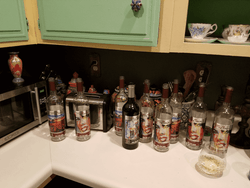Embarking on a culinary adventure is not just about savoring exquisite dishes; it’s also about pairing them with the perfect wine. Walking into a restaurant can be intimidating, especially when faced with an extensive wine list. However, fear not! I’m here to demystify the art of ordering, tasting, and serving a bottle of restaurant wine, leveling up your dining experience.
Navigating the Wine List
The sight of a lengthy restaurant wine list can be overwhelming but, think of it as a treasure map waiting to guide you to the perfect bottle. Don’t hesitate to ask for recommendations; sommeliers are there to help. If you prefer white, red, or something sparkling, let them know. Additionally, specifying your budget can narrow down the options, ensuring you find a wine that suits your taste and wallet.
Order with Confidence
When it comes to ordering wine, don’t be afraid to trust your palate. If you have a favorite grape variety or region, go for it! If you’re feeling adventurous, ask for something unique or a local specialty. Remember, there are no wrong choices; it’s all about what makes your taste buds dance.
The Ritual of Tasting

Once the bottle arrives and the sommelier presents you with the cork, don’t panic. Sniff it casually; you’re not expected to identify the vineyard from the aroma. The purpose is to check for any off-putting smells, like a musty or moldy odor, which could indicate a spoiled wine. If it smells fine, nod and the sommelier will proceed to pour a small amount into your glass.
Swirl the wine gently in your glass. This action might seem pretentious, but it’s essential for aerating the wine and releasing its aromas. Take a moment to inhale the bouquet. Is it fruity, floral, or spicy? Trust your senses; there are no right or wrong answers here.
Savoring the Complexity
Now, the moment of truth: the taste. Take a small sip and let it roll around your mouth. Notice the flavors – is it rich and velvety, or light and crisp? Consider the balance between sweetness, acidity, tannins (for red wines), and alcohol. Does it make your taste buds sing? If yes, excellent! If not, don’t hesitate to share your thoughts with the sommelier. They might recommend an alternative that better suits your preferences.
Decoding the Language
Talking about wine can be as complex as the drink itself, but it doesn’t have to be. Use simple, relatable terms. Instead of saying a wine has “notes of blackberry and leather,” you can say it’s “fruity and a bit spicy.” If the wine feels light and refreshing, describe it as “crisp and easy to drink.” Your goal is to express your experience, not impress with jargon.

A Few Wine Etiquette Tips
If you’re the one tasked with pouring, hold the bottle by the base to avoid warming the wine with your hands. Fill the glasses only a third full, allowing room for the wine to breathe and develop its aroma. Always serve others before yourself, starting with the person to your right and moving counter-clockwise around the table. And if someone refills your glass, be sure to offer a polite nod of gratitude.
Embrace the Journey
Ordering, tasting, and serving restaurant wine should be a pleasurable experience, not a daunting task. Trust your instincts, be open to exploration, and don’t hesitate to seek guidance from the experts. Remember, the best wine is the one you enjoy the most. So, raise your glass with confidence, savor every sip, and let the art of wine enhance your dining adventures. Cheers to the joy of discovering new flavors and the wonderful world of wine!
Cover photo: Image by pressfoto on Freepik






